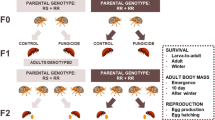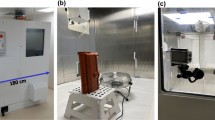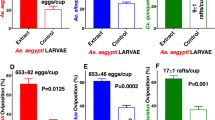Abstract
THE need for standardized methods of testing insecticides has become an important factor in insecticidal research, especially where routine examination of new materials is desirable. Chemical assay may provide an index of the potential toxicity of an insecticide, but evidence has been provided recently to show that the influence of toxicant concentration in an insecticide may be completely obscured by variation in the physico-chemical properties of the carrier medium1. The fact that each component of an Insecticide may contribute towards gross toxicity restricts the usefulness of chemical assay as an index of toxicity. Hitherto, attempts which have been made to correlate chemical and biological, tests have been based on the invalid assumption that the main purpose of a carrier medium is to transmit the insecticide to the test insects, after which toxicant concentration is a limiting factor in biological activity. This assumption has provided a general basis for 'standard' methods of insecticidal bio-assay, in which attention has been directed more towards arbitrary elimination of unknown variable factors than towards the fundamental causes of this variation2.
This is a preview of subscription content, access via your institution
Access options
Subscribe to this journal
Receive 51 print issues and online access
$199.00 per year
only $3.90 per issue
Buy this article
- Purchase on Springer Link
- Instant access to full article PDF
Prices may be subject to local taxes which are calculated during checkout
Similar content being viewed by others
References
Hurst, H., NATURE, 145, 462 (1940); 147, 388 (1941); 152, 292 (1943).
Gnadinger, C. B., "Pyrethrum Flowers", 2nd ed. (Minneapolis, 1936). Shepard, H. H., "The Chemistry and Toxicology of Insecticides" (Minneapolis, 1940). Campbell, F. L., Soap and San. Chem., 18, 119 (1942).
Rideal, S., and Walker, J. T. A., "Approved Technique of the Rideal-Walker Test", pp. 12 (London, 1921). Ruele, G. L. A., and Brewer, C. M., Soap and San. chem. Blue Book, 117 (1942).
Anon, Soap and San. Chem. Blue Book, 184 (1942).
Ford, J. H., Soap and San. Chem., 17, 91 (1941).
Murray, C. A., Soap and San. Chem., 16, 111 (1940).
Kearns, C. W., and March, R. B., Soap and San. Chem., 19, 101 (1943).
Searls, E. M., and Snyder, F. M., J. Econ. Ent., 29, 1167 (1936) Searls, E. M., Soap and San. Chem., 18, 97 (1942).
Author information
Authors and Affiliations
Rights and permissions
About this article
Cite this article
HURST, H. PRINCIPLES OF INSECTICIDAL BIO-ASSAY. Nature 152, 400–404 (1943). https://doi.org/10.1038/152400a0
Issue Date:
DOI: https://doi.org/10.1038/152400a0
This article is cited by
Comments
By submitting a comment you agree to abide by our Terms and Community Guidelines. If you find something abusive or that does not comply with our terms or guidelines please flag it as inappropriate.



